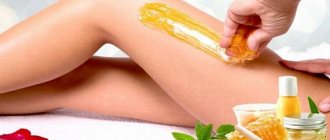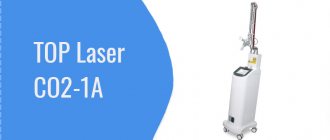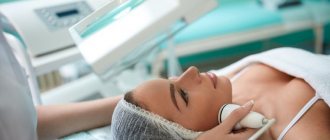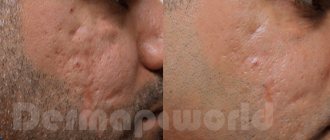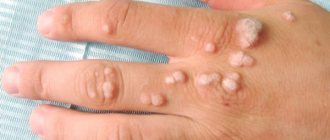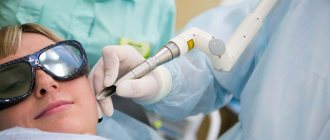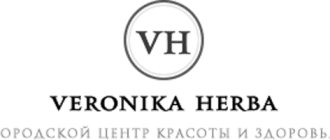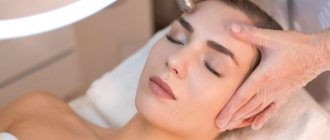CO2 laser skin resurfacing
CO2 laser skin resurfacing is a procedure that uses carbon dioxide (CO2) and a laser to remove scars, warts, stretch marks and deep wrinkles. Using this method, you can reduce the appearance of several signs of aging and get rid of some other imperfections.
The device uses intense light power to treat many aesthetic problems. Drooping bags under the eyes, acne scars and age spots are some of the most common problems that are addressed to cosmetology centers in Moscow and other cities. The procedure has a fairly high price, but if used correctly, this type of hardware intervention can significantly delay the need for surgical intervention.
Intimate rejuvenation with CO2 RE Intima
The topic of intimate rejuvenation is becoming popular among women, since it affects the interests of every woman of age associated with the physiological aging of the genital organs. With the advent of the CO2RE Intima module, the device received new opportunities for use in gynecology and procedures for the vaginal mucosa, which helped patients get rid of a number of serious problems, avoiding surgical intervention. A surprising and unexpected benefit we are seeing is that CO2RE Intima laser treatment has an impact on urinary incontinence.
Amazing results after CO2 RE laser treatment
Thanks to the formation of new collagen and elastin fibers, the tissue is completely reconstructed, the texture is improved, the tone is increased, cells are renewed from the inside, dryness and discomfort are eliminated, pigmentation disappears, and the appearance of the genitals improves.
When performing manipulations, disposable attachments guarantee women safe and comfortable treatment in the intimate area. The procedure takes no more than 15 minutes and is absolutely painless. To achieve maximum effect, repeated application is required at intervals of three to four weeks. There is no rehabilitation period.
Laser vaginal rejuvenation is a quick and very effective procedure performed on an outpatient basis.
How does CO2 laser resurfacing work?
Ablative lasers, such as the CO2 laser, cause damage to the skin. The procedure removes a thin surface layer (epidermis) and heats the underlying layer (dermis). This stimulates the growth of new collagen fibers, the synthesis of which is slowed down for one reason or another. As the skin heals and new epidermal cells form, the treated skin becomes clearer, smoother, and firmer. Renewed skin is better supplied with blood and nutrients and absorbs care products better.
A similar effect can be achieved using non-ablative lasers such as pulsed light (IPL) devices. They do not damage the skin, but instead stimulate collagen synthesis and improve tone and texture. It is less invasive and requires less recovery time, while at the same time being less effective.
The cosmetologist chooses the type of laser depending on the patient’s existing problems and cosmetic goals.
When should skin rejuvenation be performed?
Fractional skin rejuvenation is recommended after 30 years. By this moment, the first wrinkles appear on the face, in the eye area, nasolabial folds, forehead, and chin. And also if the complexion has lost its uniformity, pigmentation has appeared, loss of elasticity has appeared, and the first signs of sagging skin have appeared. If you have scars, scars (striae), or traces of burns, you may need to consult a cosmetologist at an earlier age.
Different treatment regimens are used for different skin types, which can be learned in detail during a consultation with a cosmetologist.
The best time for rejuvenation procedures is from October to March, before the first rays of the sun appear.
What are the benefits of carbon dioxide laser resurfacing?
CO2 laser skin resurfacing
Skin resurfacing using a CO2 laser can be used for the following cosmetic defects:
- Fine and deep wrinkles
- Age spots
- Uneven shade or texture
- Sun damaged skin
- Mild to moderate acne scars
- Large pores
- Superficial or deep hyperpigmentation.
Other applications of carbon dioxide grinding include:
- Seborrheic keratosis
- Non-malignant neoplasms of HPV
- Hyperplasia of the sebaceous glands
- Angiofibroma (fibrous nasal papule)
- Connective and complex nevi
- Lentigo spots
- Syringomas (intradermal papules)
- Epidermal melasma (increased skin pigmentation)
- Rhinophyma (tissue hypertrophy on the nose)
Ablative body rejuvenation
The modern CO2 RE laser allows for rejuvenation and correction of defects on any part of the body. Which helps control gravitational ptosis with age-related changes, enhancing skin tone; smooth out the relief, remove stretch marks on the stomach and thighs, remove scars and scars, get rid of pigmentation.
Results from the procedure
- rejuvenation of body skin using a non-surgical method (neckline, hands, mammary glands);
- evened skin color, significant lightening, elimination of pigmentation;
- smoothing postoperative and traumatic scars;
- pronounced tightening, lifting effect;
- removal of stretch marks (striae).
When is CO2 laser resurfacing not recommended?
Like any procedure, laser rejuvenation has contraindications. The patient must carefully read this list, since laser exposure to the skin is a serious intervention with a risk of complications. Skin resurfacing is not recommended in the following cases:
- Active bacterial, viral or fungal infections
- Poor general health, inflammatory processes in the body
- Taking oral isotretinoin (Accutane) within the past 6 months
- Fitzpatrick skin phototypes 5-6 (very dark skin)
- Other resurfacing procedures within the previous 2-3 months
- Unwillingness to accept the possibility of complications
- Excessively thick or thin skin (determined by a doctor during consultation)
- Collagen vascular diseases
- Human immunodeficiency virus (HIV) or systemic infections
- Tendency to form keloid scars
- Metal piercing in the treated area
Technical features of the CO2 RE laser
CO2 RE fractional laser is an excellent choice for skin rejuvenation and wrinkle correction procedures. The proven results make its use in practice unique, which makes it possible to successfully treat a wide range of medical and cosmetic conditions.
- Manufacturer : Syneron Candela
- Country of origin : USA
- Brand : Candela Medical
- Application : Face,Body
- Purpose : For skin treatment, For rejuvenation
- Procedure : Fractional resurfacing, Laser resurfacing, Gynecology
- Functionality : Multifunctional
Successful treatment requires carefully and correctly selected settings. The Clinic in Uruchya employs specialists with deep knowledge in the field of laser procedures. The improved methodology of their implementation makes our procedures exclusive in the medical services market.
You can make an appointment with a doctor by calling +375 (17) 370-00-05 , or leaving a message on the website, where a consultant will contact you as soon as possible.
Is resurfacing with a CO2 laser painful and what to expect after?
This procedure is usually performed under anesthesia, so discomfort is minimal. This is a numbing cream that is applied directly to the skin. Other types of anesthesia are performed in selected situations and skin conditions that require deeper laser penetration.
After exposure to CO2 you can expect to feel a slight sunburn. You will also notice redness and swelling on the skin. Itching and mild tingling for several days are common. Depending on the intensity of treatment, the “sunburn” effect may be weaker or more severe. In these more severe cases of redness, scabs may appear as the skin heals.
What other types of laser rejuvenation are there?
There are several types of laser peeling.
1) Superficial
. This method is intended for treating the deformed upper layer of skin, i.e. epidermis.
This peeling allows you to quickly remove age spots and make uneven skin smooth.
Superficial peeling is suitable for the lips, décolleté, neck and around the eyes, meaning it can be trusted on the most sensitive areas.
Such procedures include most types of fractional facial rejuvenation and all types of laser skin resurfacing.
Keep in mind that after superficial peeling, complete skin restoration will occur only after one to two weeks, since such procedures injure the epidermis.
2) Middle
. This type of peeling is suitable for those who want to get rid of dead cells in the basal (lowest) layer of the epidermis.
Medium peeling helps smooth out wrinkles of varying depths, as well as keloid scars and stretch marks. In addition, it relieves the patient of warts, shallow scars that are the result of acne, papillomas, evens out the complexion, eliminating age spots. Medium peeling affects problem areas on the neck, face, décolleté, and hands.
The skin is irradiated with a frequent grid of beams from various types of lasers, including neodymium, erbium and CO2 lasers. This method is called fractional. Each type of laser has its own advantages and disadvantages. They are due to different wavelengths, penetration depths and procedure techniques. There is no laser that is significantly superior to others.
A completely different method of medium peeling is laser dermabrasion. It differs in that, in addition to beams of laser beams, the skin receives a lot of additional energy during the session, which contributes to the formation of microexplosions, as a result of which the tissue evaporates due to the action of the laser. In this case, laser resurfacing is carried out using CO2 and an erbium laser.
3) Deep
. Deep peeling includes laser facial rejuvenation, performed using a device called Palomar, as well as RF rejuvenation. Such methods are considered the most effective. We can say that this is a lift without surgery.
The Palomar device promotes the formation of a very dense laser grid, sending beams of rays onto the skin. It consists of several nozzles, a cooling element and a control microprocessor.
In RF rejuvenation, mentioned above, laser beams penetrate deep into the epidermis. In this case, the deep layers are affected by radio frequency energy. As a result, problem areas of the face and body are heated in a targeted manner.
Both fractional RF facial rejuvenation and laser rejuvenation using the Palomar device make it possible to make collagen bundles more dense and form a supporting framework for the skin. In addition, during the procedure, rejuvenating and regenerative processes are activated in those areas on which the master acts with a laser.
Since both procedures are safe and eliminate the risk of injury to the patient, they can also be done for the skin around the eyes, and not just for the neck and arms.
We hope you are convinced that facial rejuvenation is possible without plastic surgery. Deep laser peeling smooths out deep wrinkles, evens out the complexion and makes the skin look younger.
The advantage of fractional RF facial rejuvenation and laser rejuvenation using the Palomar device is that the effect of the procedures improves within six months after completing the course.
If deep laser peeling is carried out with a CO2 laser, then the specialist must be highly qualified, otherwise you can leave deep scars on the skin. After all, this device is used by plastic surgeons as a scalpel.
Now about pain relief. For superficial and median exposure to the skin, local anesthesia is used. For deep peeling, general anesthesia will be required.
What type of peeling you need depends on the complexity of the cosmetic defect. Therefore, be sure to consult a specialist.
Read material on the topic: How to remove wrinkles on the face: the most effective methods
Post-procedure care
Do not touch or rub your skin when brushing or showering, and avoid contact with hot water. The treated area must be cleaned 2 to 5 times a day, and also include protective products in your care that the cosmetologist will recommend.
The treatment area is peeled off during the recovery period to allow new cells to come to the surface. The new skin will be pink, like after a major scratch. Over time, the pinkness will go away, and during this period it is important to protect yourself from external influences, especially ultraviolet rays. Redness tends to last longer in people with fair skin, such as blondes and redheads. Full recovery may take up to a year.
How does the laser rejuvenation procedure work?
The procedure requires a special laser that efficiently treats problem areas of the patient’s skin. It can be used on skin of any condition and thickness.
Laser beams (fractions) contribute to the evaporation of small areas of skin, our eyes cannot see them. The tissues warm up, causing old collagen and elastin to be destroyed. For some time you will not see the result, the condition of the skin will not change, because the skin will not be damaged externally. However, the skin begins to recover and new cells are created. As a result, the skin is partially renewed and its condition improves.
The laser facial rejuvenation procedure is carried out in several steps:
- First, the master prepares the client’s skin for the upcoming procedure. To do this, the area of skin that will be affected is cleansed and a special cream is applied to it, which helps reduce pain.
- The specialist carefully examines the skin and enters the relevant data into the fractional laser.
- Using a laser, areas of the skin in a certain sector are evaporated. This lasts about half an hour.
- This concludes the procedure. The skin is treated with a special ointment.
Don’t expect to notice the effect immediately after leaving the laser rejuvenation specialist’s office. At first, the skin will turn red and there may be slight swelling. Don't be alarmed, this is acceptable. The skin will fully recover in three days, and the effect will be noticeable after 10 days.
To consolidate the results, you should undergo a course of sessions, especially if you experience significant skin problems. Fractional laser rejuvenation of the face and skin has a cumulative property.
Watch a video about laser rejuvenation:
How long does it take for the treated area to heal?
Facial restoration after CO2 laser resurfacing takes from 7 to 14 days, depending on the depth of beam penetration. After the procedure, swelling occurs. It peaks on the second or third day and then subsides by the fifth or seventh day. Redness and itching are normal and should not be a cause for concern. During the first week, varying degrees of crust formation are observed. It is necessary to apply open or closed dressings until complete healing.
Apply a light, water-based moisturizer for the next 2-3 weeks. Avoid products containing acids such as salicylic, glycolic, etc. in your daily care until the skin is completely restored. After healing, use sunscreen.
A return visit to the clinic where the procedure was performed is usually required after 2-3 days, then a week, 3-4 weeks, 3 months, 6 months and 1 year after resurfacing.
Where to get fractional laser rejuvenation in Moscow
Contact the City Beauty and Health Center “Veronika Herba”, which uses innovative technology - the AFFIRM laser device, developed by the American company CYNOSURE. This laser can be considered a revolution in aesthetic cosmetology.
This laser provides non-ablative fractional laser rejuvenation. The US Food and Drug Administration has approved this procedure. It is also registered in Russia. In addition, this system has received the prestigious ASLMS Award and is recognized as the best fractional technology in the United States.
Fractional laser AFFIRM is:
Uniqueness. Deep rejuvenation + effective lifting in one session.
Possibilities.
The laser acts on all factors that contribute to skin aging: dilated blood vessels, wrinkles, skin hydration, pigmentation, decreased tone, uneven texture.
Intelligence.
The laser has a built-in triple radiation calibration system, which ensures accurate operation.
Maximum efficiency and economy.
The amount of microthermal damage increases the density of the laser beam and reduces the time of laser facial skin rejuvenation to 15 minutes. Thus, in one session the master performs two procedures.
Safety.
Since the penetration depth of the beams can be precisely controlled, the results are guaranteed. A big advantage is that the procedure does not require a long rehabilitation period.
Painless.
Anesthesia is not required because an air system is provided that cools the area of skin that is treated with the laser by 30 C. Thanks to this, the patient does not feel pain.
How does it work and how is it different from other procedures?
Lasers that use patented MultiPlex (MPX) technology generate two types of pulses. This is what makes them different from all others. The American laser Affirm MPX (Cynosure) has a wavelength of 1320 nm and 1440 nm, which allows you to consistently, with a difference of 3–5 ms, act on different layers of the patient’s skin, and therefore on different links leading to aging.
The procedure requires a glass tip, which provides cooling of the epidermis when exposed to the laser and after treatment. Cynosure Affirm MPX first emits a pulse at a wavelength of 1320 nm. The CAP system consists of approximately a thousand diffractive elements and is a special lens. These elements help disperse the laser beam, so large areas of skin can be treated in one pulse. The pulse with a wavelength of 1320 nm is redistributed, which leads to the fact that the dermal structures located at a depth of 0.5 to 2 millimeters are heated evenly, and regeneration of collagen fibers occurs. The skin becomes more elastic.
When a pulse with a wavelength of 1320 nm is applied to the skin, a pause lasting 3-5 milliseconds occurs. During this procedure, the epidermis is cooled and the client’s discomfort is minimized. After this, the laser emits a pulse with a wavelength of 1440 nm, which is also redistributed by the diffraction elements of the ACS. Thanks to this, the surface layers of the dermis and epidermis are treated evenly, and photodamage is corrected.
As you can see, the combination of MultiPlex technology and the CAP system makes the laser rejuvenation procedure more effective, without damaging the tissue.
What are the possible side effects of CO2 laser resurfacing?
The following transient side effects may occur after exposure to a fractional laser:
- Swelling
- Erythema (redness)
- Itching
- The appearance of acne
- Hyperpigmentation
- Infection (bacterial, viral, fungal)
- Contact dermatitis
- Hypopigmentation (loss of skin pigment)
- Demarcation lines
- Hypertrophic scars and keloids
- Damage to tooth enamel
- Eye injuries
- Post-inflammatory hyperpigmentation
Possible complications and consequences
Our patients have never contacted us with complaints of side effects. However, in general practice the following cases are very rare, which mainly occur due to the incompetence of the specialist or when the patient has contraindications to the procedure:
- Thermal damage to the skin when the recommended parameters of laser exposure are exceeded. In this case, it is recommended to use drugs with anti-inflammatory and epithelializing effects and prevent hyperpigmentation.
- Mild hyperemia (redness of the skin due to blood flow to the treated area), which goes away without a trace within 1-2 days.
- Local swelling, which also goes away on its own within the first 24 hours.
- Light flaking and dry skin, which can be eliminated with a nourishing cream.
- A slight burning sensation that goes away on the day of the procedure. To reduce discomfort, you can apply an ice compress or put on a hydrogel mask.
As we said above, the listed side effects are usually consequences of unprofessional conduct of the procedure. When undergoing a procedure at the TORI aesthetic medicine center, you are insured against such unpleasant surprises.
What are the benefits of undergoing the procedure?
Fractional resurfacing of the face with a CO2 laser allows you to solve a whole range of cosmetic problems and restore youth and beauty to the skin.
The results of the procedure are:
- Complete elimination of wrinkles.
- Pronounced lifting effect.
- Returning the natural texture of the skin, getting rid of scarring and post-acne marks.
- Increased skin turgor and elasticity
- Removal of pigmentation and tattoos.
Stages of implementation
- Skin make-up remover.
- Treatment of skin with medical antiseptics.
- Applying an anesthetic to the treated area.
- Protect your eyes from laser radiation with special glasses.
- Laser skin treatment. After applying an anesthetic to the skin, it will be painless. Application with a cutaneous anesthetic lasts from 15 to 30 minutes
- (about a quarter of an hour).
- Application of special soothing and wound healing agents.
- Application of sterile special post-procedural means.
How to prepare?
To prevent adverse consequences and speed up healing, it is necessary to follow a number of recommendations for preparing for the procedure.
Carry out skin cleansing, antiherpetic drugs (course 5 days), as well as for dehydrated and thin skin - 3 procedures: fractional mesotherapy, biorevitalization, skin hydrodeposition.
Two weeks before the upcoming laser treatment you should avoid:
- sun tanning, visiting a solarium;
- photosensitizing drugs (provoke a reaction of the skin to ultraviolet radiation): antibiotics (antifungals, tetracyclines and fluoroquinolones);
- diuretics; neuroleptics; antidepressants; sleeping pills; cardio medications; contraceptives;
Possible complications
Laser facial resurfacing with a fractional CO2 laser is a modern procedure that is as safe as possible for the skin and has no side effects. However, failure to follow the doctor's recommendations before and after completion of the procedure can lead to a number of adverse consequences: the formation of scars or dark spots, herpetic rashes 6 to 12 days after the procedure.
Strict adherence to the technology of preparation for laser resurfacing, the experience and professionalism of our doctors allows us to reduce the risk of complications to zero. During the entire period of operation of the clinic, our clients have never encountered the stated consequences.
